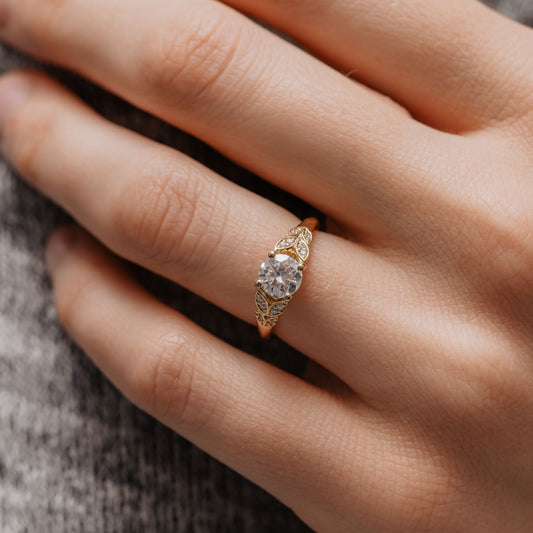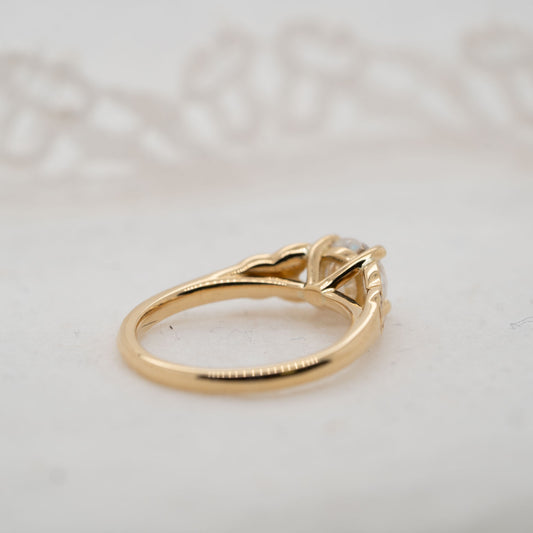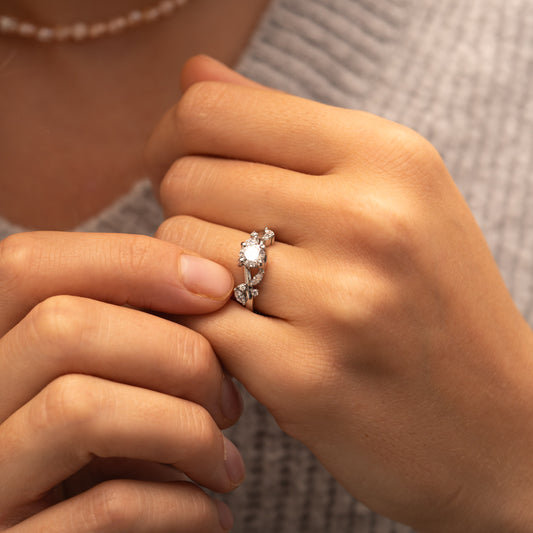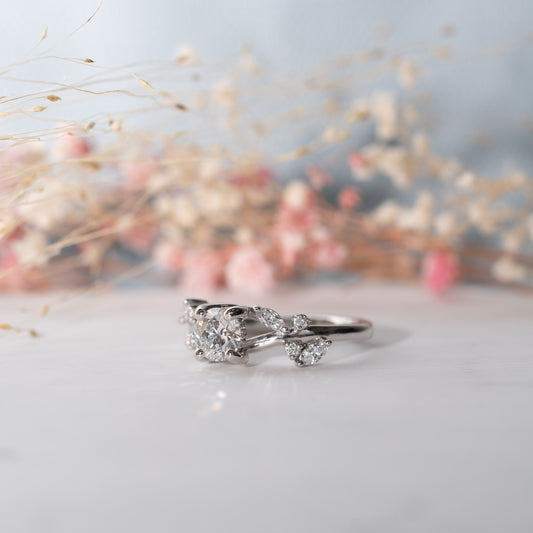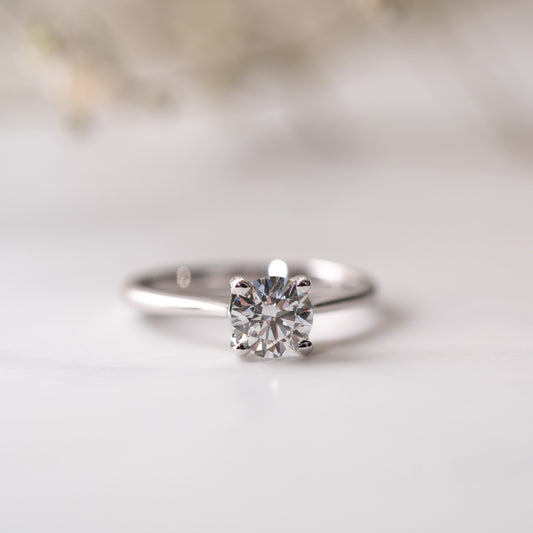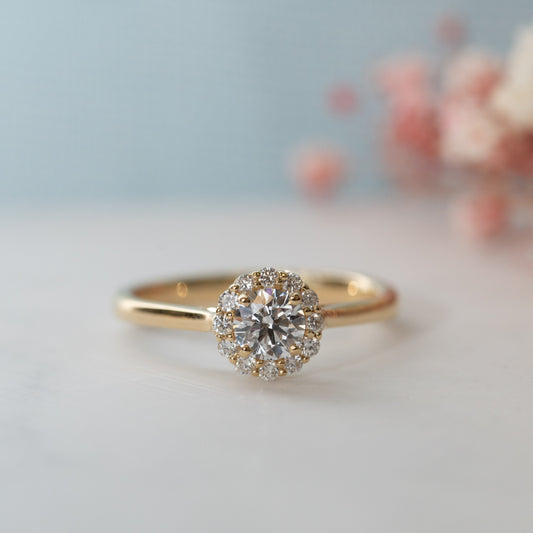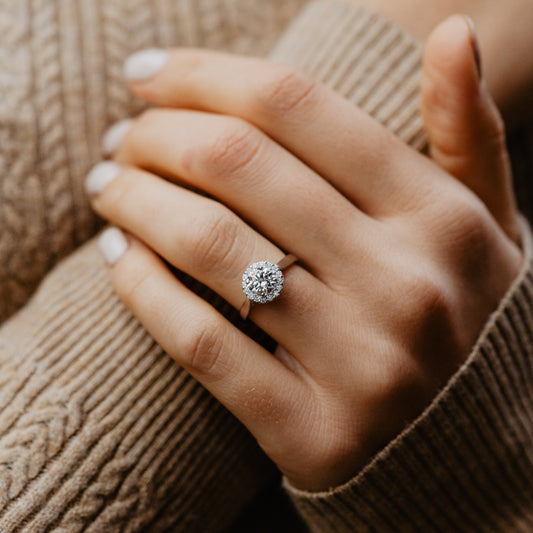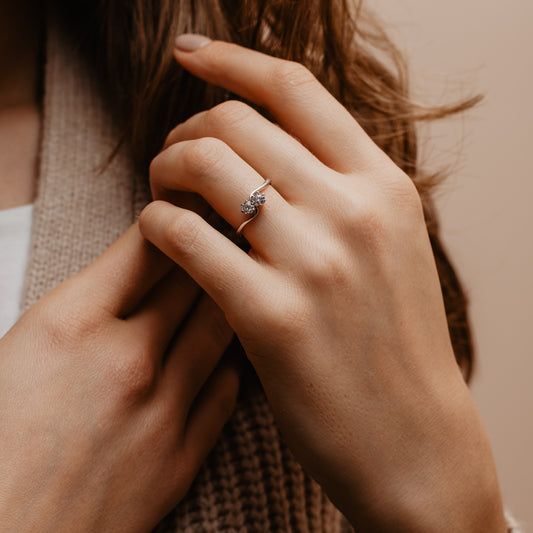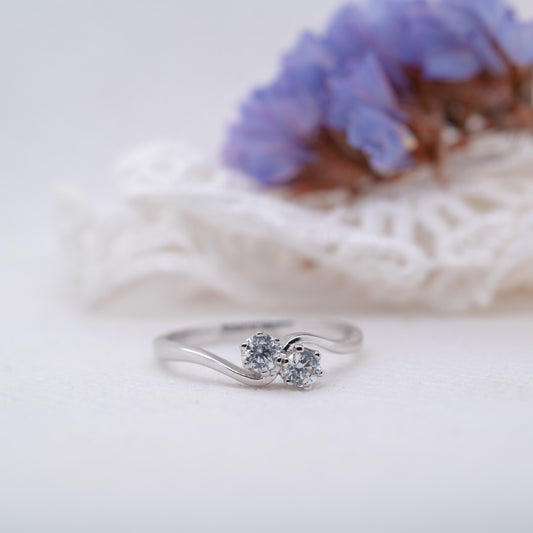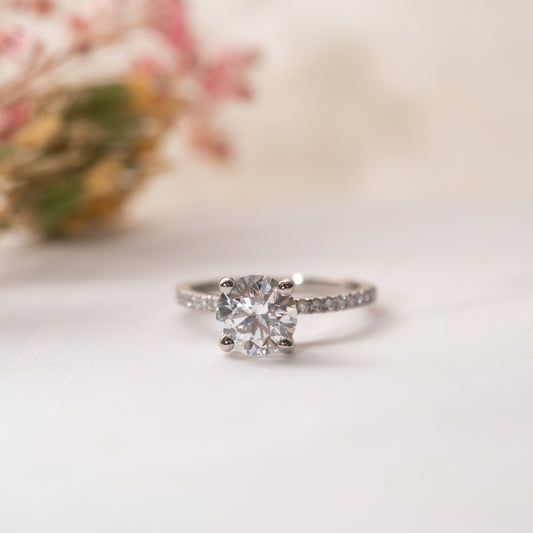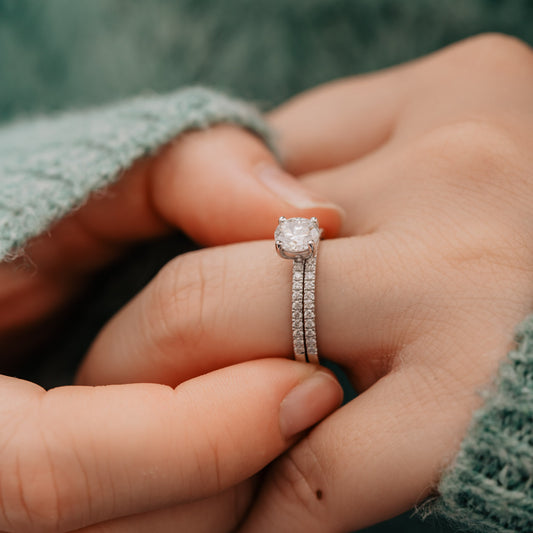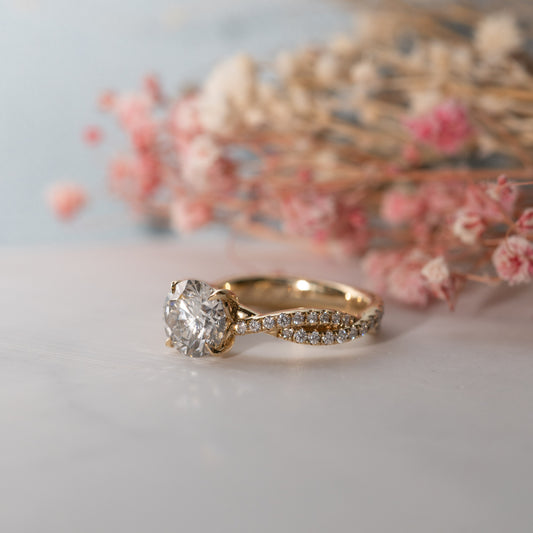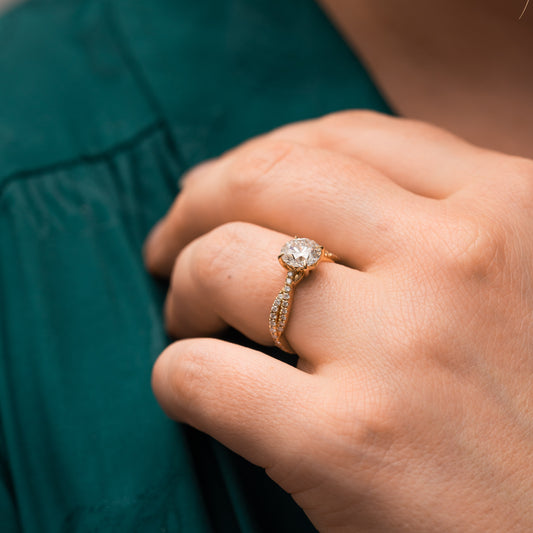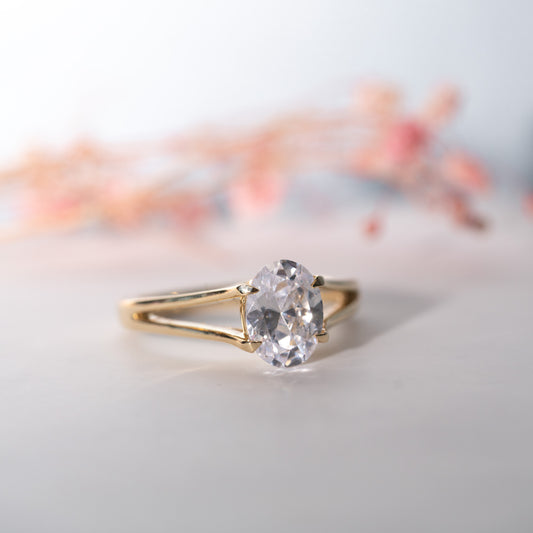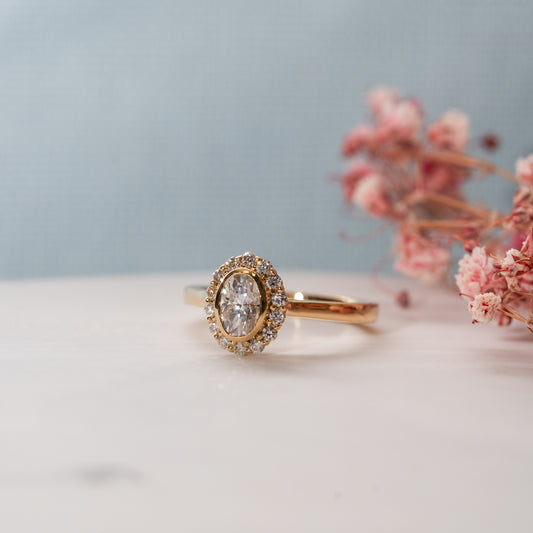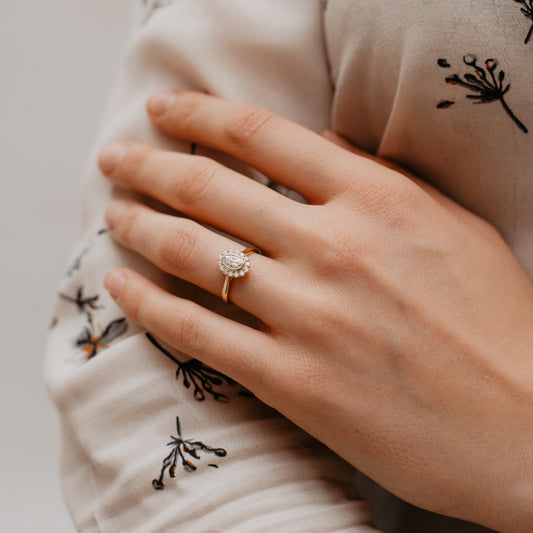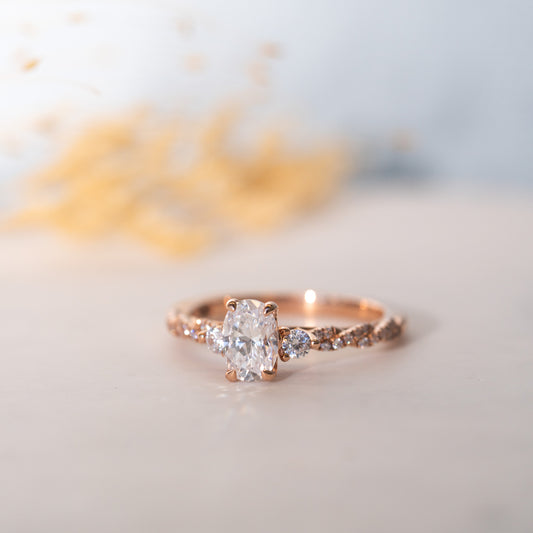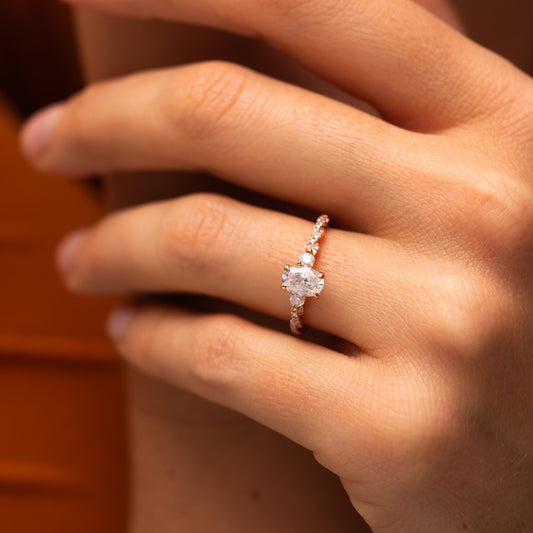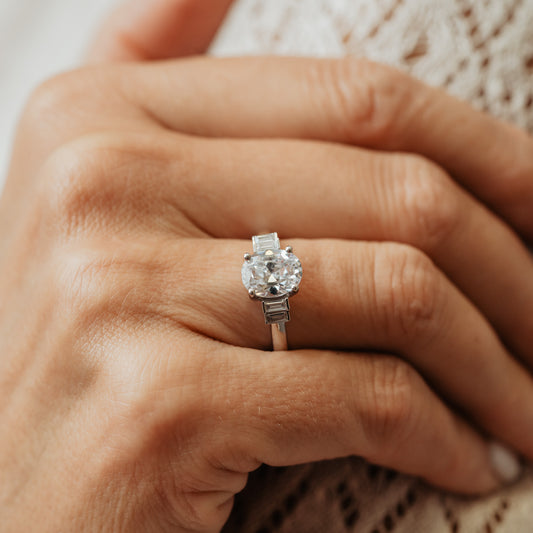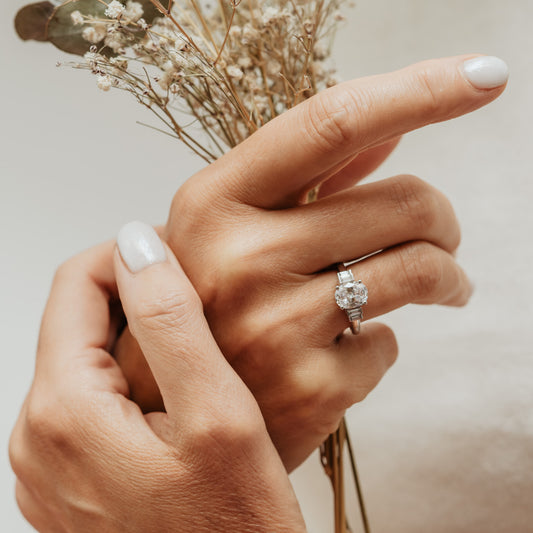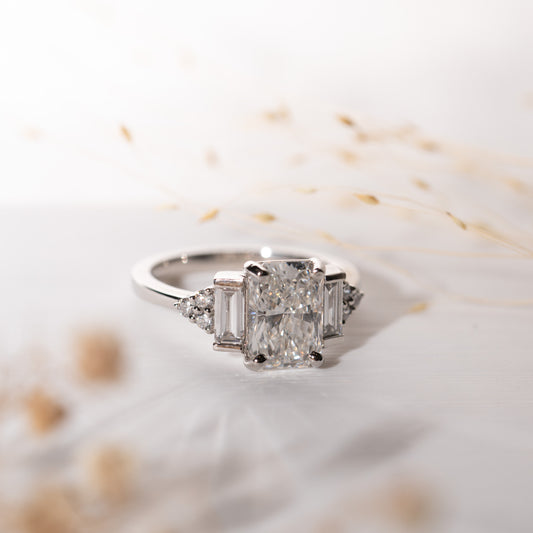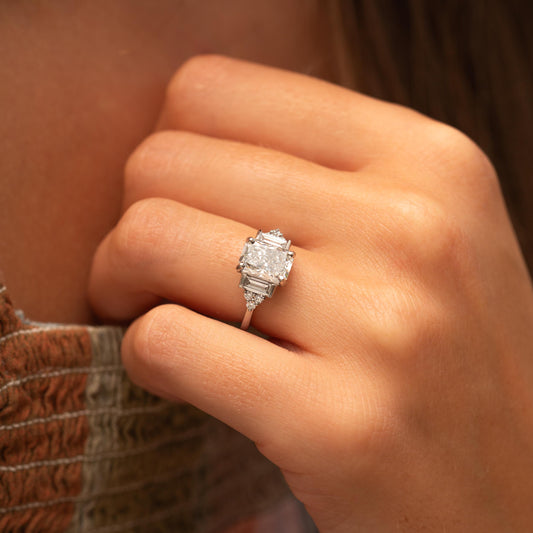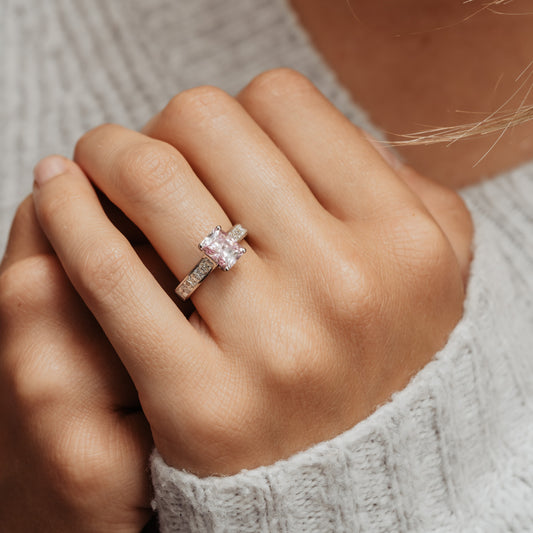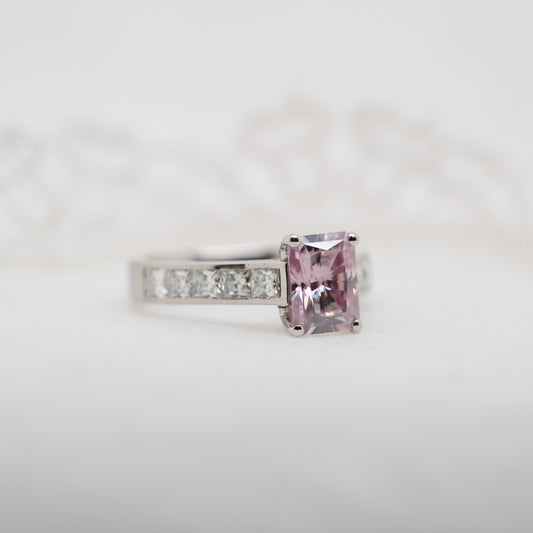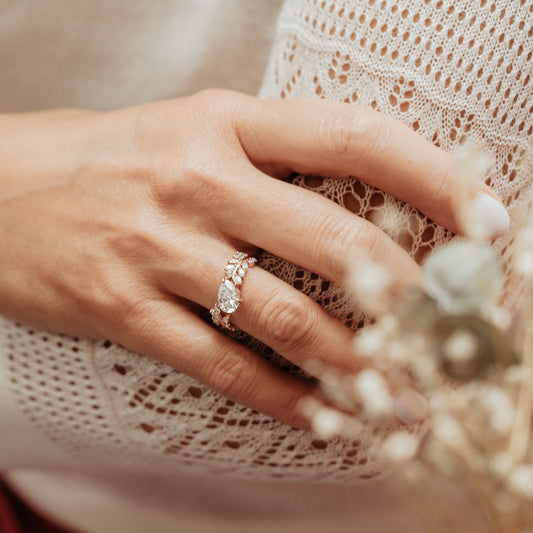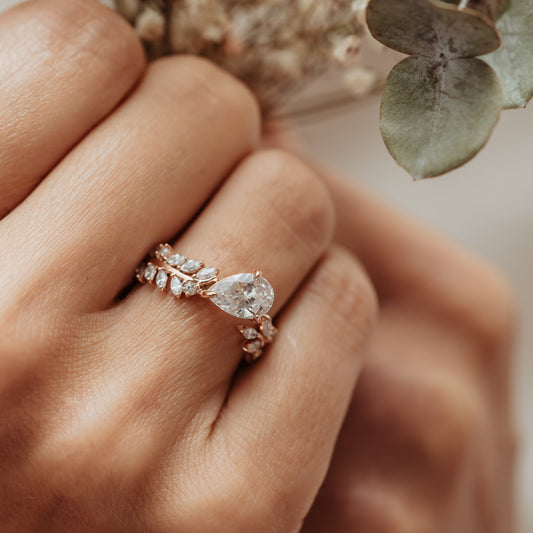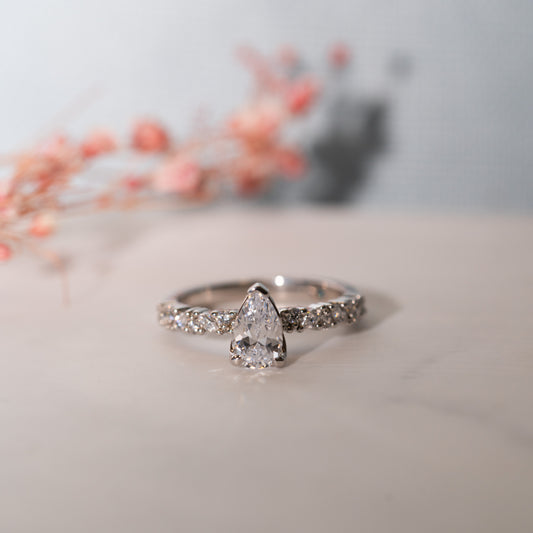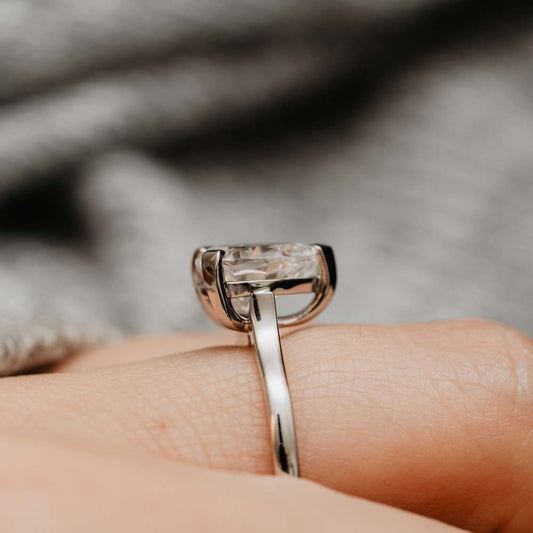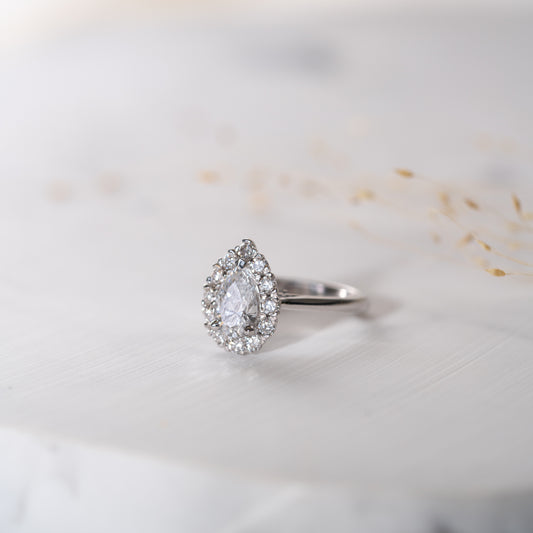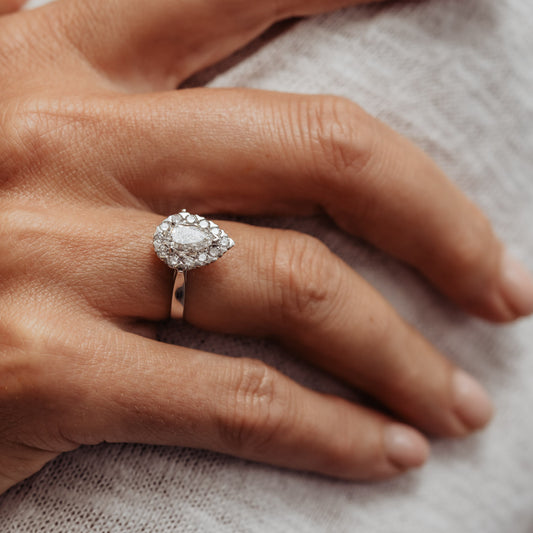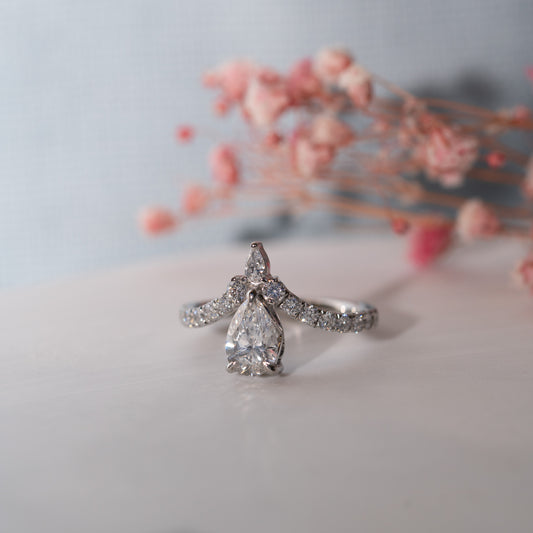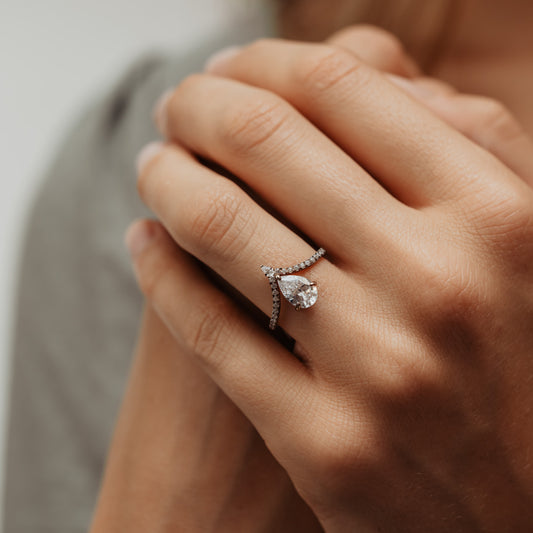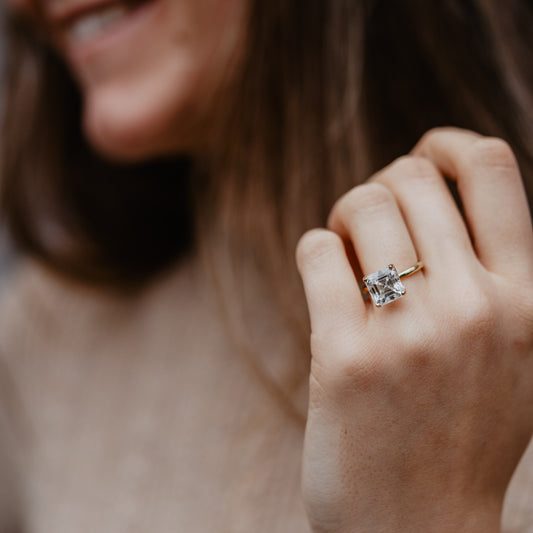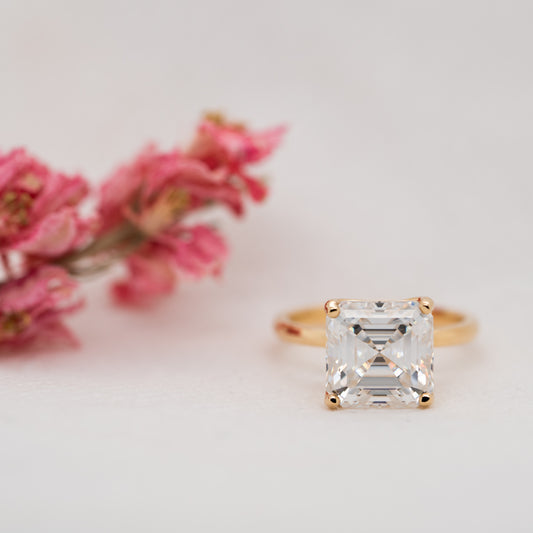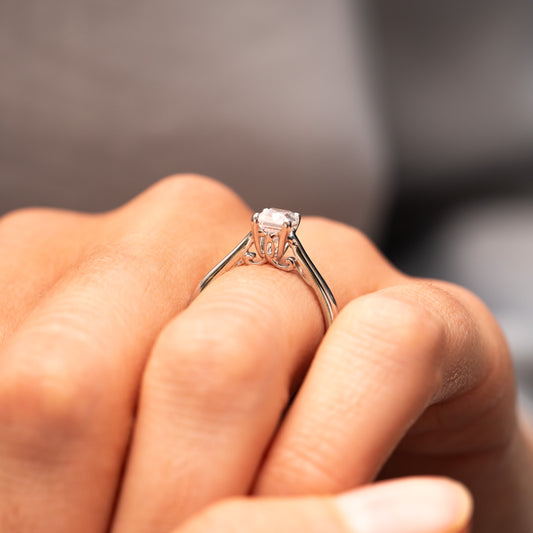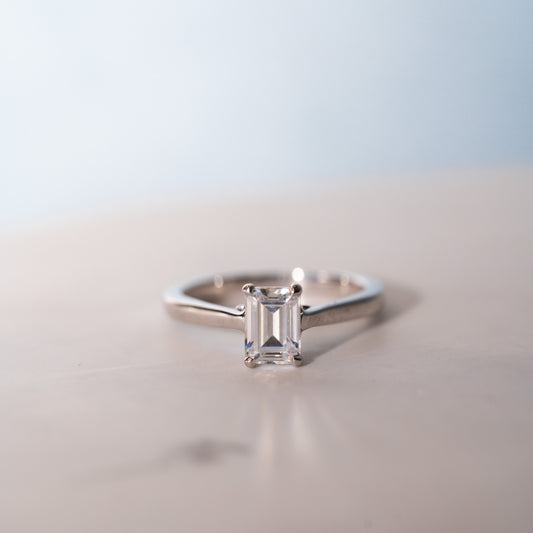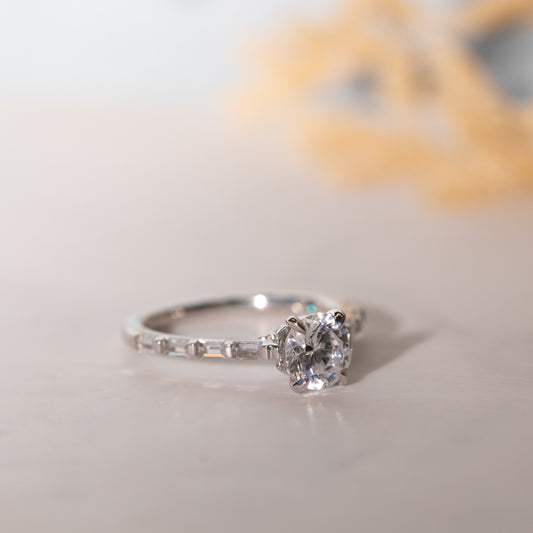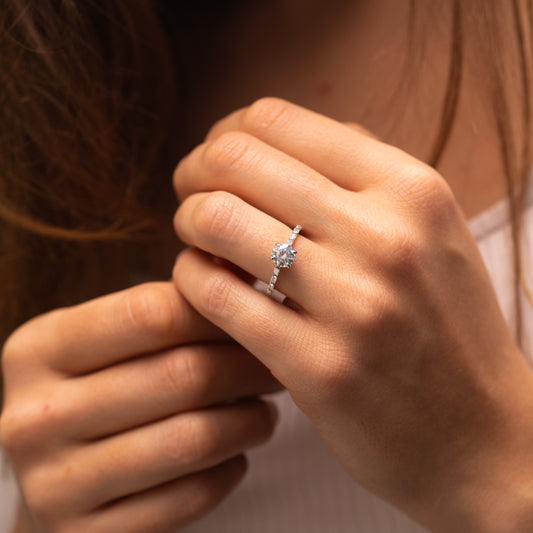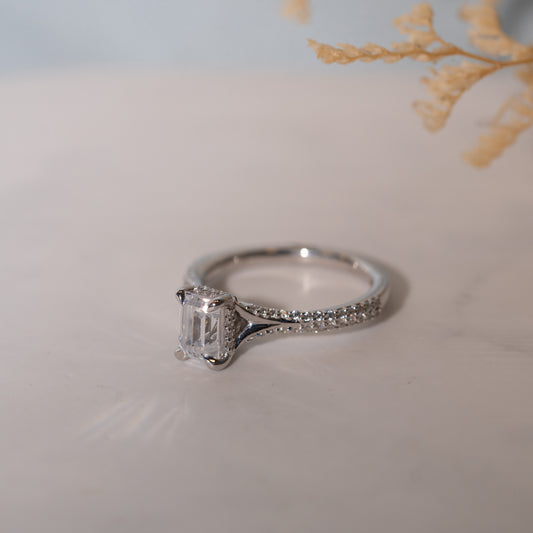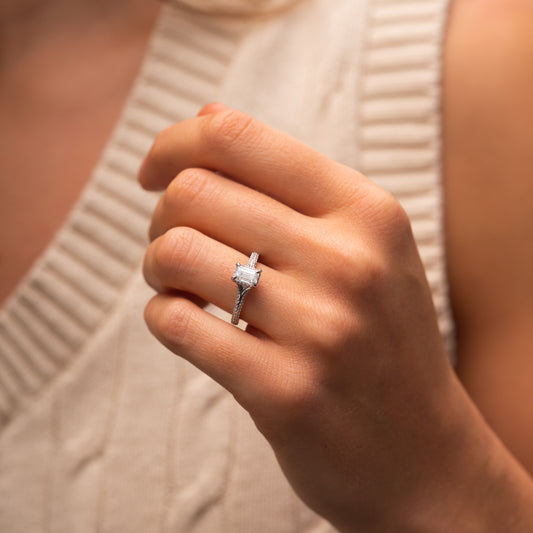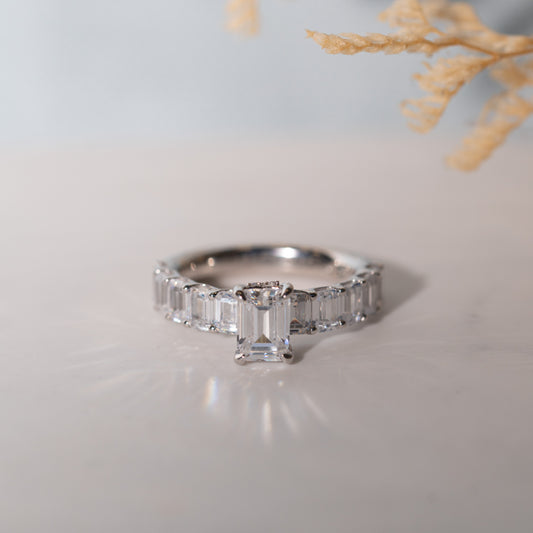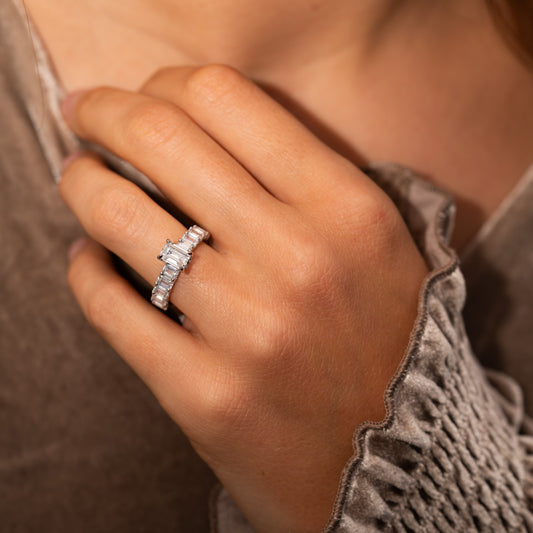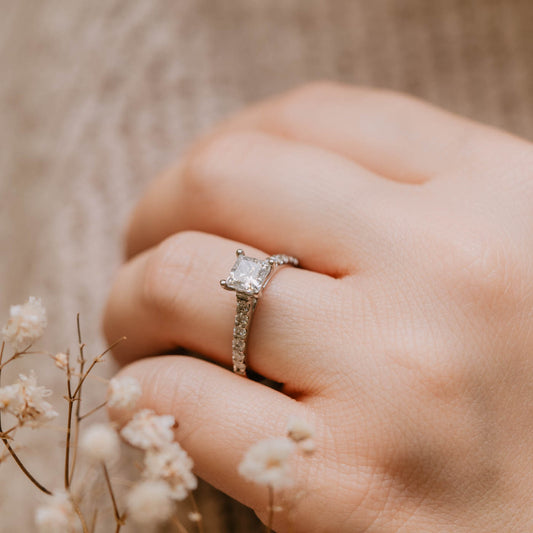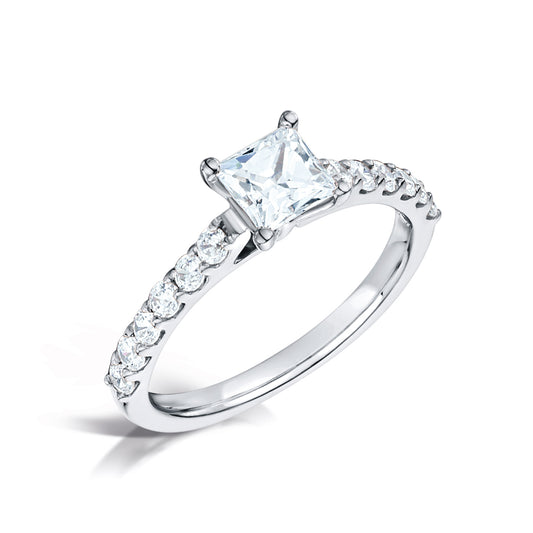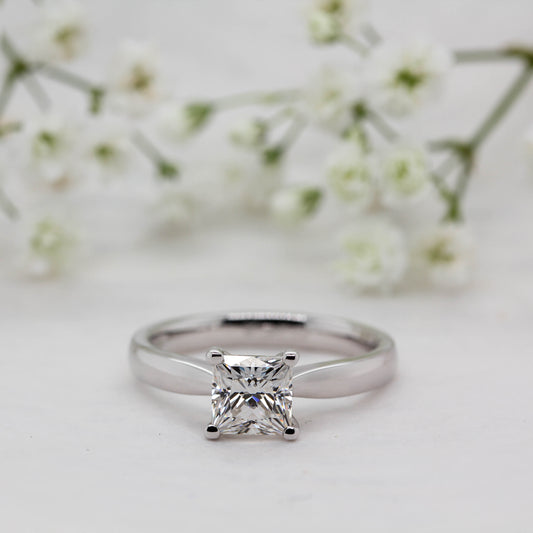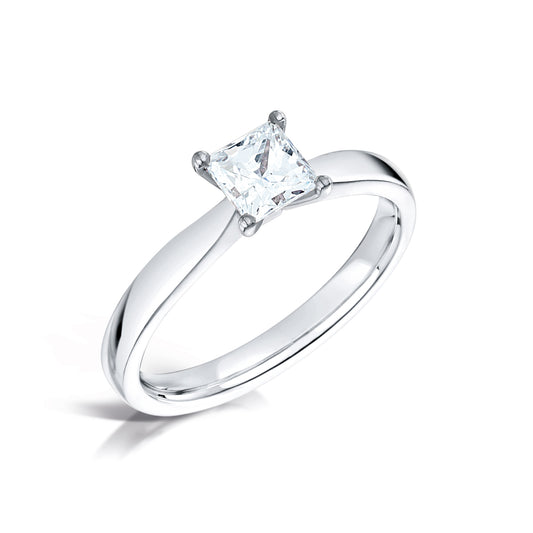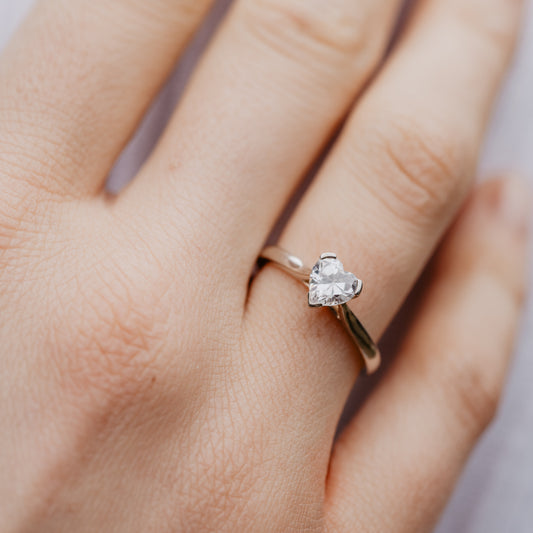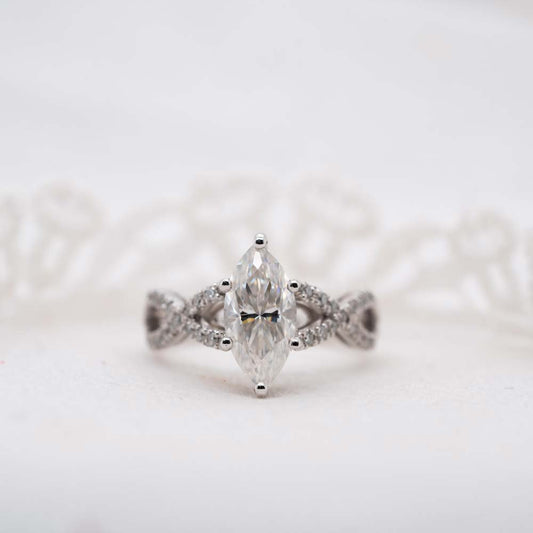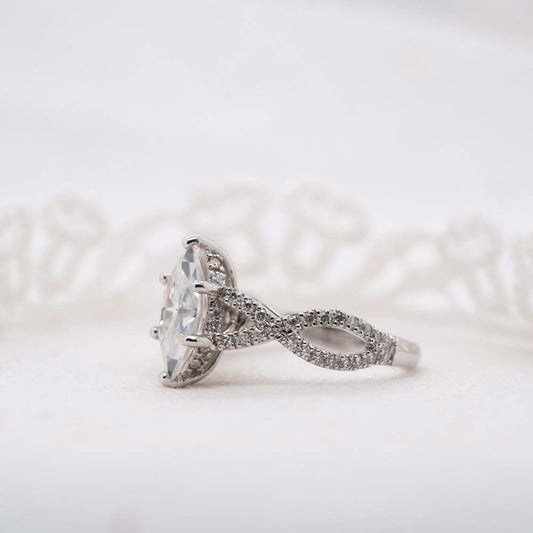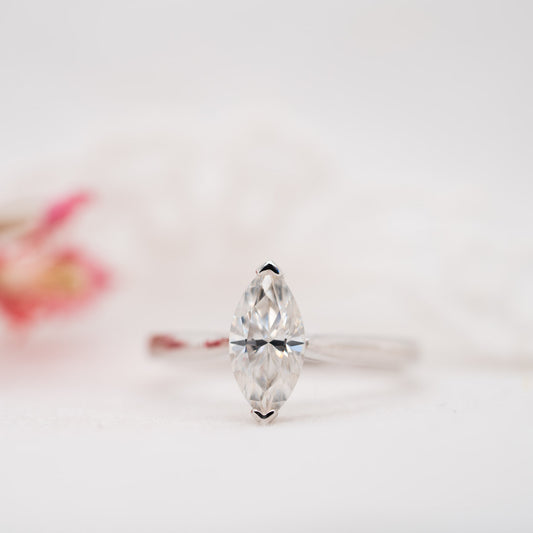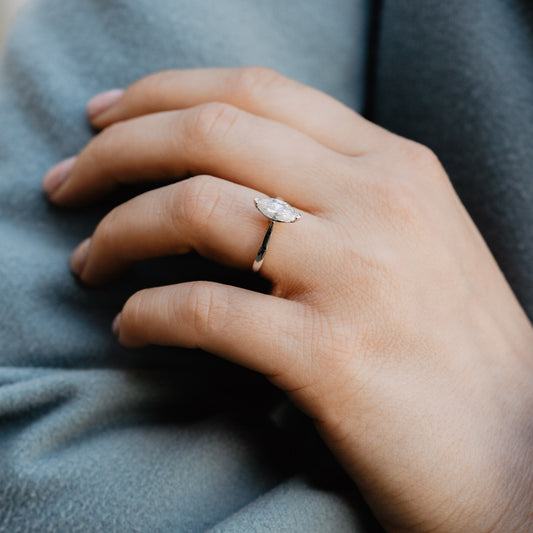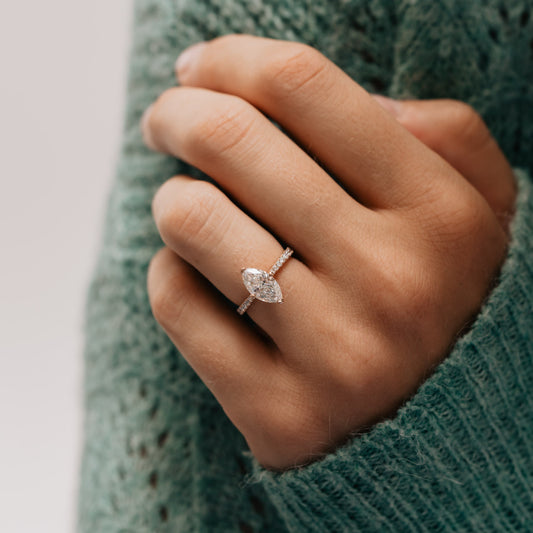The shape of the stone is fundamental to how it looks, and every shape has a different cut, sparkle and meaning behind it.
Ethica offers a wide range of diamond cuts and shapes, ensuring that every ring is as extraordinary as the love it represents. The diamond shape you choose should reflect your unique style and personality.
When shopping for diamond jewellery, the first decision that is usually made is the shape of the diamond. Diamond shapes are categorised into two groups: round diamonds and fancy shape diamonds. Typically there are 10 shapes to choose from; from the most popular round brilliant, which is the most traditional diamond shape, to what are known as ‘fancy shapes’ like heart or pear shapes.
There are various things to consider when choosing your diamond shape, as each one offers something unique and wonderful and there are different advantages to each.
We’ve prepared a handy list of the most popular diamond shapes below, to help you select the perfect diamond. If you need further help, then why not book an appointment at one of our showrooms or contact one of our experts and we’ll be happy to assist you.

Round
Timelessly Classic
The Round Brilliant cut diamond will always be the most popular and classic shape. It is beloved for its unmatched brilliance and beauty and it returns the most amount of light due to its ideal facet pattern. It resembles a simple circle, which makes it extremely versatile.
All Round Brilliant stones are consistently cut by hand to the coveted ‘Hearts and Arrows’ cut, the best you can get for sparkle and light play.
The Round Brilliant cut diamond is by far the most popular and most researched stone shape available today. For almost 100 years, diamond cutters have been using advanced theories of light behaviour and precise mathematical calculations to optimise the fire and brilliance of the Round Brilliant cut.
Featured products

Oval
Flattering and Elongating
Oval diamonds look larger than round diamonds and creates a gentle elongating effect for which elliptical gemstones are treasured. They make a woman’s finger seem longer and more slender. It’s popularity has soared in recent years and the oval is definitely one of our top selling shapes.
The deeply fascinating Oval cut diamond is actually a relatively recent invention; it was designed by a jeweller at Lazare Kaplan Inc. in 1957. They are cut in a similar pattern as a round brilliant diamond, with smooth angles which results in a brilliance that is nearly as bright and perfect as a round brilliant gemstone, but with a larger surface area.
Featured products

Classic Emerald
Timelessly Classic
“Hall of mirrors” creates exceptional clarity The ultimate vintage cut, an emerald diamond exudes old-world glamour. Unlike the multi-faceted brilliant cuts, this step-cut diamond isn’t known for sparkle, and should be enjoyed for its lustre and clarity instead.
The sophisticated Emerald cut is a rectangular shape with flat corners. It has a step cut facet design, which resembles a deep staircase and has the refractive effect of a series of mirrors. The Emerald cut is widely known for its classic beauty and appealing elegance, especially when used as a focal gemstone.
Featured products

Pear
The Teardrop Of Joy
The Pear cut diamond has often been a favourite of royalty and is also known as the teardrop diamond. The deep, mesmerising Pear cut is a combination of the rich fullness of the Round Brilliant and the sparkling intensity of the Marquise. Though traditionally used in pendants and drop earrings, this cut is also an eye-catching addition to rings. It’s a unique, beautiful cut that looks especially good in a halo setting and is known to have a slenderising effect on fingers due to its tapered end.
In 1475, a Flemish cutter by the name of Lodewyk van Bercken invented a diamond-polishing wheel called a scaif. The scaif transformed the diamond trade. His innovative polishing wheel enabled Van Bercken to place facets into the diamond with absolute symmetry, and opened the doors to the creation of complex diamond cuts. At the same year Lodewyk van Bercken invented the world’s first Pear Shaped Diamond.
Featured products

Asscher
Historically Royal
The Asscher cut dates back to the early 20th century when jeweller and diamond cutter, Joseph Asscher, developed the design in his Amsterdam atelier. This new design coincided with the birth of the Art Deco movement. Perhaps one of the most famous diamonds of all time, worn by Elizabeth Taylor, was a jaw-dropping 33.19 carat Asscher called the “Krupp Diamond.” The Asscher cut diamond can be seen as a 21st-century update to the Emerald cut. Also known as a step-cut, the Asscher cut features longer facets which give it a staircase appearance. It flashes long lines of sparkle, instead of the typical all-over sparkle.
This cut features a square shape with a flat table (top surface), many small step cuts along the top edges, and longer facets underneath for a Hall of Mirrors effect. Like the Cushion cut, the Asscher cut has an open culet (the bottom of the gemstone) and a facet plan that draws the eye into the gemstone and gives it depth. This is a highly unusual design, often favoured by those with a more vintage taste, but also with a modern sense of style.
Featured products

Cushion
The Candlelight Diamond
The Cushion features a similar square silhouette to the Princess cut diamond, but has rounded corners, sometimes referred to as a Pillow cut, the Cushion cut has an open culet (the bottom point of the stone) The result is a deep, luxurious gemstone with a romantic effect. Ever since the engagement of Prince Harry and Meghan Markle, we receive a lot of questions about the main stone in Meghan’s ring. It’s a stunning cushion cut diamond. This is is a square diamond shape with rounded corners and 61 facets. This cut reflects the light in a chunkier way than for example a round brilliant. This is what we call ‘the crushed ice effect’. The subtle crushed ice sparkle was very popular around the 1920s. That’s also why cushion-shaped diamonds can be fully appreciated in a vintage setting.
The Cushion cut was originally designed to be viewed by candlelight, and maintained enormous popularity for over 70 years during the Victorian period and is a modern interpretation of Princess. Even today, the vintage setting is the most beloved ring style for cushion cut diamonds. The development of this cut dates way back to almost 200 years old. The name, however, is quite modern. In the past, they called this shape the ‘mine cut’, a square diamond with rounded corners. The cushion cut is one of the most brilliant cuts of all square and rectangular shaped stones, and makes a wonderful choice when looking for a classic shape that is a little more unique.
Featured products

Emerald Radiant
Intense Brilliance
If you’re looking for an alternative to the popular Princess cut, a Radiant cut diamond for your engagement ring makes a lovely and classic choice. This cut is perfect for those who seek a breathtaking combination of an Emerald cut whilst craving the classic sparkle of a Round Brilliant cut diamond. A relatively new diamond shape, the Radiant cut was designed by Henry Grossbard in the late 1970s. He created a cutting technique that combined the best elements of Emerald and round diamond shapes–allowing Radiant diamonds to exhibit incredible brilliance and fire. The Radiant is also the first cut to have a brilliant-facet pattern applied to both the crown & pavilion which makes it exhibit fierce shine with much more brilliance and sparkle.
Its quadrilateral form and 70 brilliant facets also make it similar to the Princess design, but its rectangular shape and blocked corners again emulate the Emerald figure. It is stunningly dramatic as a solitaire, but also compliments arrangements with side stones such as Baguettes, Trillions, or Princess shapes.
Featured products

Princess
Clean Lines and Angles
If Edgy yet still delicate and today’s second most popular diamond shape: it is of course the Princess cut, and it’s easy to see why! It’s a traditionally square diamond with sharp edges and 59 facets. The cut has a square or rectangular shape when viewed from above, and from the side is similar to that of an inverted pyramid with four bevelled sides.The Princess cut as we know it today, can be traced back to the 1960’s. In 1971, the diamond cutter Basil Watermeyer patented a new diamond cut with the name “the Barion”. This looked already a bit like the Princess, but the many symmetrical lines of the Barion made it very difficult to cut this shape correctly. Years later, this name changed into the Princess cut.
Princess cut diamonds have intense sparkle and intricate cross facets making it a favourite which looks good in just about every setting. As of 2015, Princess cut diamonds were the second most popular choice for an engagement ring. Approximately 30% of engagement rings use Princess cut diamonds. The cut has a square or rectangular shape when viewed from above, and from the side is similar to that of an inverted pyramid with four bevelled sides.
Featured products

Heart
The Epitome of Romance
The gentle and endearing Heart cut diamond is also one of the most scintillating jewel designs. A modified version of the classic round brilliant, Its rounded pavilion gives it the same heightened refraction and breathtaking brilliance, while the pointed bottom and gracefully curved arches at the top complete the shape with perfect symmetry. The romantic shape symbolises eternal love, perfect for an engagement ring.
The heart shaped diamond has been around for centuries and started out as a symbol of Royalty. The first time they appeared in conversation was all the way back in 1463, between Duke of Milan, Galeazzo Maria Sforza, and Nicodemo in 1463. Nowadays, the heart diamond can be found on celebrities such as Lady Gaga. Due to the precise symmetry and facets, the heart remains one of the most luxurious shapes.
Featured products

Marquise
The Little Boat Diamond
Similar to Pear, the Marquise cut diamond appears the largest of all cuts. Also known as “Navette”, meaning little boat in French, due to the marquise diamond’s boat-like shape. The long shape has a flattering, slenderising effect on the fingers, due to the tapered edges on both sides. Legend says that the Marquise cut first appeared in Paris circa 1745 and its fascinating history can be traced back to the height of the French monarchy. King Louis XV commissioned his court jeweller to create a diamond that resembled the smile of his beautiful mistress, the Marchioness Madame de Pompadour.
A sleek and seductive design, the perfect Marquise cut gemstone should always be cut in a 2:1 aspect ratio, meaning it must be twice as long as it is wide to have the proper aesthetic effect. The elongating effect combined with its vintage charm has made the marquise stone grow in popularity in recent years and can be seen on the fingers of celebrities such as Victoria Beckham and Catherine Zeta-Jones.















